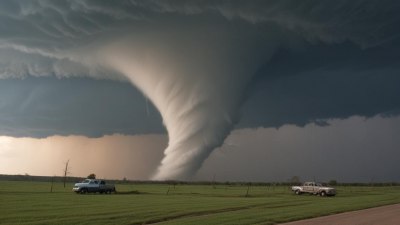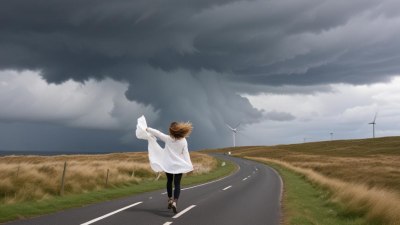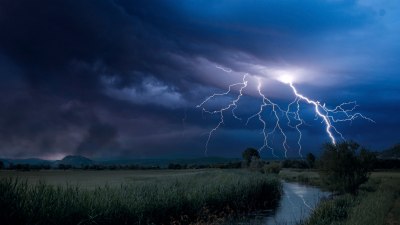How the Changing Weather Affects Your Favorite Outdoor Activities
Explore how seasonal weather changes influence outdoor activities like hiking, camping, and sports.

Image by cookie-studio on Freepik
Weather is an ever-changing aspect of our environment that dramatically impacts our outdoor activities. Whether you enjoy hiking, camping, cycling, or sports, the day-to-day variations in weather can dictate what you can do safely and enjoyably. Understanding how these changes affect your plans can enhance your experience and help you make informed decisions about when and where to enjoy your favorite activities. In this article, we will delve into various outdoor activities and discuss how different weather conditions influence them, providing insights to help you navigate and adapt to these changes effectively.
1. The Role of Temperature
Temperature plays a crucial role in determining what outdoor activities are advisable. During hot summer days, activities such as hiking and cycling require careful consideration of hydration and heat exhaustion risks. Early mornings or late evenings tend to be the best times for exercising outdoors during this season. Conversely, in cooler temperatures, engaging in these activities can feel invigorating but may require additional gear to maintain warmth.
On the other hand, winter months bring colder temperatures that can limit outdoor activities. However, this season opens the door for winter sports such as skiing and snowboarding. While temperature drops contribute to snow formation, which benefits winter sports enthusiasts, excessive cold can be dangerous. Making outdoor plans during this season requires checking weather forecasts to ensure safety while enjoying winter activities.
2. Rain and Its Effects
Rainy weather can significantly impact outdoor plans, presenting both challenges and opportunities. For instance, hiking in the rain can be an adventurous experience, provided participants are equipped with waterproof gear. However, wet trails can lead to slippery conditions that increase the risk of falls; therefore, caution is essential. Many outdoor enthusiasts appreciate the beauty of nature enhanced by rain, as vibrant colors and sounds can be more pronounced.
For activities such as camping, rain can disrupt plans but also provide a unique perspective of nature. A well-prepared camper should have appropriate rain gear, such as waterproof tents and tarps, to stay comfortable and dry. Plus, rain can create serene, peaceful environments that allow for relaxation and connection to nature.
3. Windy Days
Wind is another significant weather element affecting various outdoor activities. In activities such as sailing or windsurfing, wind is essential; however, strong gusts can pose risks, making it vital for participants to assess the wind conditions before engaging. For individuals hiking or biking, windy days can make the experience less pleasant and cause exhaustion. Furthermore, high winds can pose hazards, as falling branches or debris can lead to injuries.
Outdoor sports like soccer or football can also be affected by windy conditions. Teams may find it challenging to control the ball, affecting gameplay. Depending on the forecast, players and coaches need to schedule practice sessions or matches wisely, ensuring the wind is favorable for less hindered performance.
4. Seasonal Changes and Activities
Each season brings its unique outdoor opportunities and challenges. Spring is often marked by unpredictable weather, with sunny and rainy days occurring intermittently. This variability often leads to activities like gardening, hiking, or biking becoming highly popular as people emerge from winter’s chill. Spring blooms also provide stunning scenery, enhancing the outdoor experience.
Summer, on the flip side, is a prime time for various outdoor activities, from swimming to trail running. While people flock to beaches and parks, it is crucial to be wary of heat waves and UV exposure, which can lead to health risks for those unprepared. Engaging in activities early in the day or later in the evening can alleviate some heat-related concerns.
Fall introduces cooling temperatures and stunning foliage, making it a popular time for hiking and camping. The crisp air encourages outdoor cooking and bonfires, but the risk of weather changes and sudden drops in temperature necessitates caution. Weather patterns can shift quickly during fall, so packing layers and staying informed about potential storms is wise.
In winter, many individuals look forward to activities like snowshoeing and ice skating. While the cold may deter some activities, the right gear can make all the difference. Cold weather also affects different geographical regions; while some areas receive abundant snowfall suitable for winter sports, others may experience milder winters, affecting what people can do outdoors.
5. Adapting Your Plans
To maximize your enjoyment and ensure safety in outdoor activities, adapting plans according to weather conditions is vital. Utilizing reliable weather apps or checking local forecasts can help guide decisions on when to participate in activities. Preparing ahead and being proactive can prevent disappointment and enhance your overall experience.
Consider alternative activities if weather conditions are unfavorable. For instance, if a storm is looming, having an indoor backup plan, such as visiting a local climbing gym or an indoor sports facility, can prevent disruptions to your routine. Additionally, learning about varying locations that offer diverse weather conditions can expand your opportunities for outdoor enjoyment, allowing you to travel to places with better forecasts.
6. Safety First
Safety should always be a top priority when engaging in outdoor activities. Understanding the potential risks associated with changing weather conditions enables you to take precautions to protect yourself and your companions. Dress appropriately for the weather, have essential supplies like first aid kits, and carry adequate hydration whenever you venture outside.
Educating yourself about the signs of extreme weather and knowing when to shift plans can prevent dangerous situations. Being aware of local wildlife and environmental changes during various weather patterns will also ensure a safer outdoor experience. Always respect nature and be mindful of your impact, especially in sensitive ecosystems or areas prone to more severe weather.
7. Embracing the Outdoors
Ultimately, weather changes should not deter you from enjoying outdoor activities. Embracing the unpredictability of nature and learning how to adapt enhances your experience and fosters a connection with the environment. Whether you are hiking on a sunny day, camping during a gentle rain, or skiing during a snowstorm, each condition offers unique perspectives and challenges that enrich your adventures.
By staying informed, preparing adequately, and being flexible with your plans, you can continue to explore and enjoy the great outdoors despite the changing weather. Remember that every season brings its beauty and opportunities for adventure, so embrace the elements, prepare well, and make the most out of every outdoor moment.











